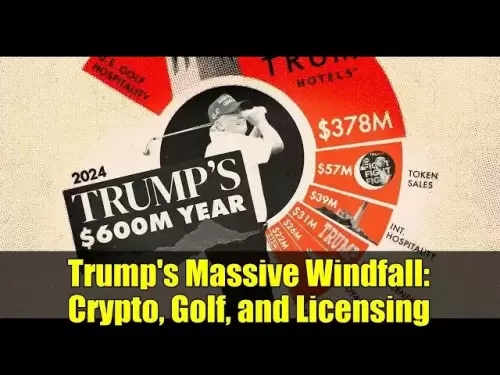 |
|
 |
|
 |
|
 |
|
 |
|
 |
|
 |
|
 |
|
 |
|
 |
|
 |
|
 |
|
 |
|
 |
|
 |
|
Cryptocurrency News Articles
The US Treasury made its final order of penny blanks and will stop distributing the one-cent coins by early 2026
May 23, 2025 at 01:09 am
A Treasury spokesperson confirmed the end of the penny to the Associated Press. The move is expected to save $56 million a year in materials

The US Treasury has made its final order of penny blanks and will stop distributing the one-cent coins by early 2026, the Wall Street Journal reported on Thursday, May 22. A Treasury spokesperson confirmed the end of the penny to the Associated Press.
The move is expected to save $56 million a year in materials, according to a Treasury official who spoke anonymously to preview the decision. Once existing penny supplies run out, businesses will begin rounding prices to the nearest five cents.
According to the US Mint, taxpayers spent $85.3 million for the minting of nearly 3.2 billion pennies in 2024. Each penny cost about 3.69 cents to produce in 2024, marking the 19th year in a row where its cost exceeded its face value.
Economists and lawmakers have proposed getting rid of the penny throughout the 21st century. They've cited the relatively high price of putting a penny in circulation, along with recent shifts toward digital payment methods and online banking.
Former President Barack Obama pushed for ending the penny. In 2015, former Treasury Secretary Jacob Lew planned to suspend penny production, but the coins have continued to be minted.
In a 2013 Google+ Hangout, Obama said the penny has lingered because of emotional attachment to the coins once popular inside children's piggy banks.
"This is not going to be a huge savings for [the federal] government, but anytime we're spending more money on something that people don't actually use, that's an example of something we should probably change," said Obama. One of the things that you see chronically in government is [that] it's very hard to get rid of things that don't work so that we can then invest in the things that do. The penny ends up being, I think, a good metaphor for some of the larger problems that we've got."
President Donald Trump renewed the push to eliminate the penny when he returned to office, calling the penny a "wasteful" expense.
Trump directed Treasury Secretary Scott Bessent to make the long-awaited change in February.
"Let's rip the waste out of our great nation's budget, even if it's a penny at a time," Trump posted on his social media platform Truth Social.
The penny was one of the US Mint's first coins produced when it was authorized by the Coinage Act of 1792. Early designs featured a woman with flowing hair, symbolizing liberty.
The coin's size, artwork, and metal composition have evolved over the years. Pennies eventually changed from pure copper to a copper-zinc mix.
President Abraham Lincoln's image arrived on the penny in 1909, marking his 100th birthday. The current design, featuring a Union shield on the back side, was introduced in 2010 to honor Lincoln's preservation of the US as a single nation.
Trump's legal basis for officially discontinuing the penny remains unclear. While the Treasury Secretary may have the power to stop new production, legal experts say Congressional lawmakers might need to act since the US Mint is under the authority of Congress.
The penny's removal may also draw attention to another coin: the nickel. The US Mint said the five-cent coins cost 13.8 cents to put into circulation.
The dime (5.76 cents), the quarter (14.68 cents), and the half-dollar (33.97 cents) remain significantly cheaper to produce than their value.
Disclaimer:info@kdj.com
The information provided is not trading advice. kdj.com does not assume any responsibility for any investments made based on the information provided in this article. Cryptocurrencies are highly volatile and it is highly recommended that you invest with caution after thorough research!
If you believe that the content used on this website infringes your copyright, please contact us immediately (info@kdj.com) and we will delete it promptly.




























































